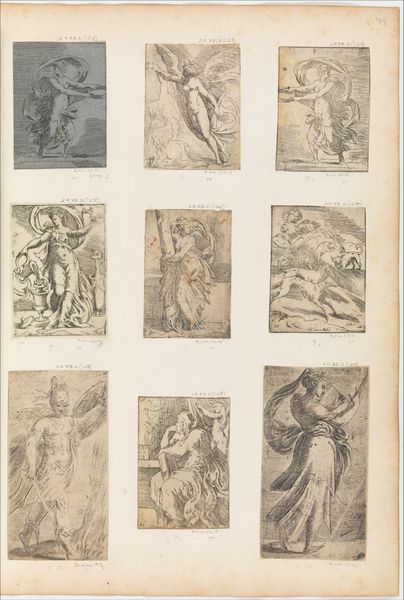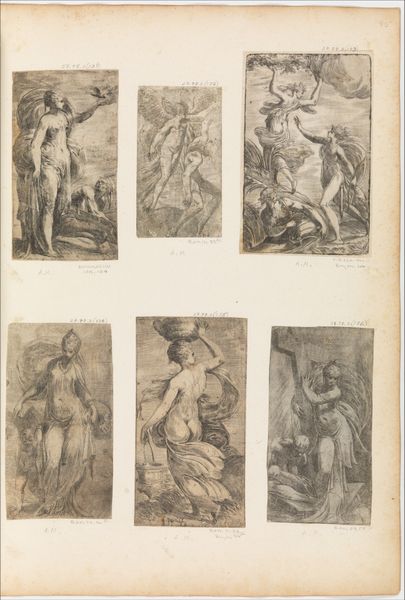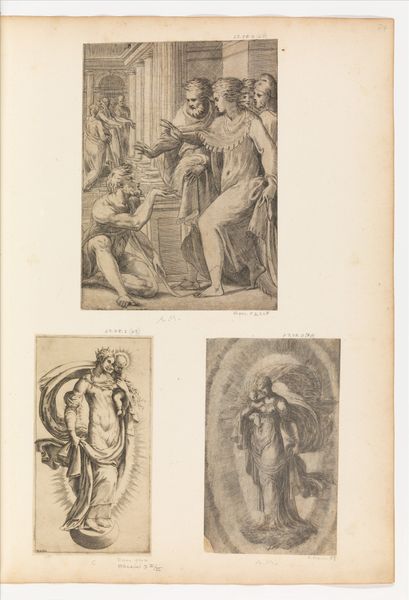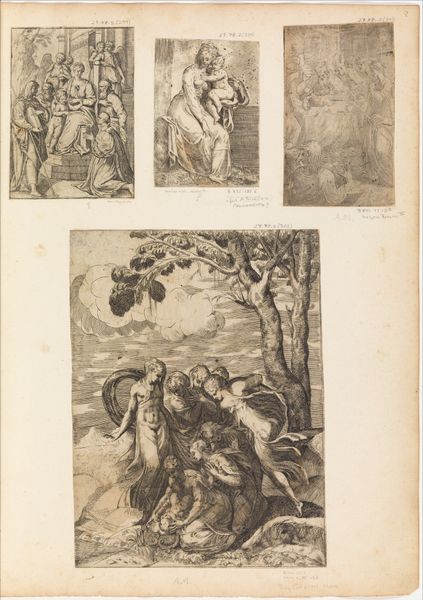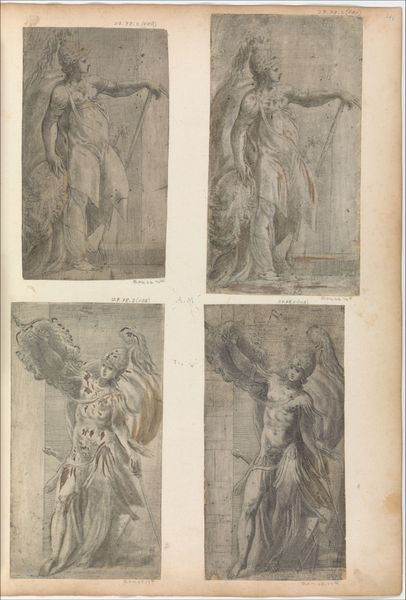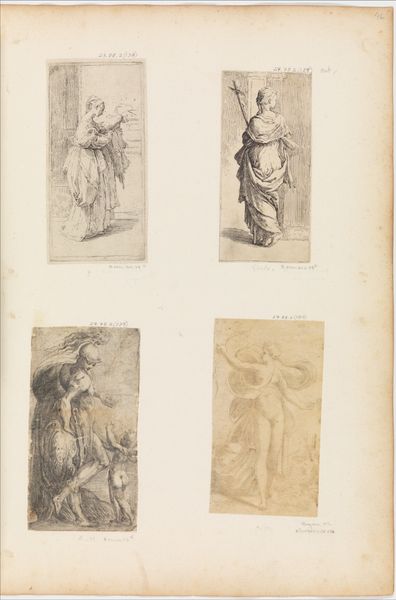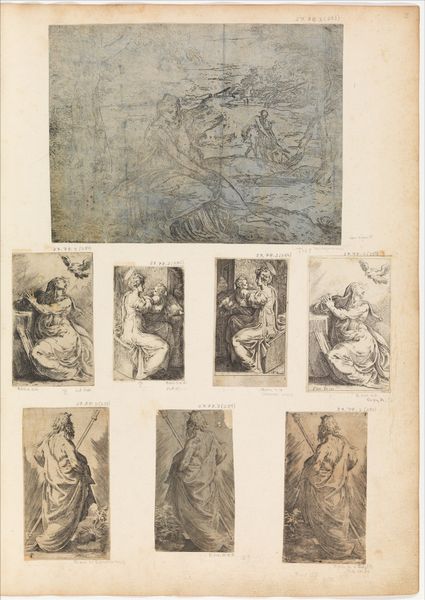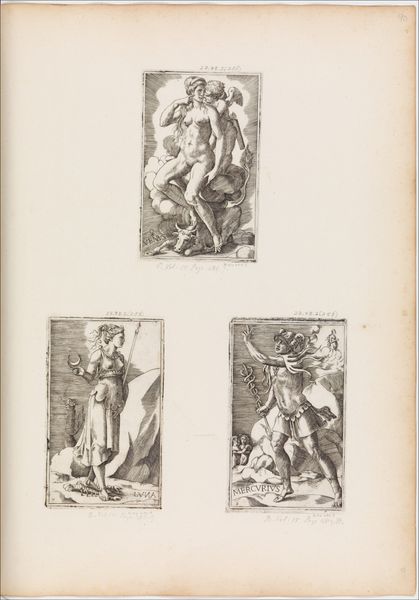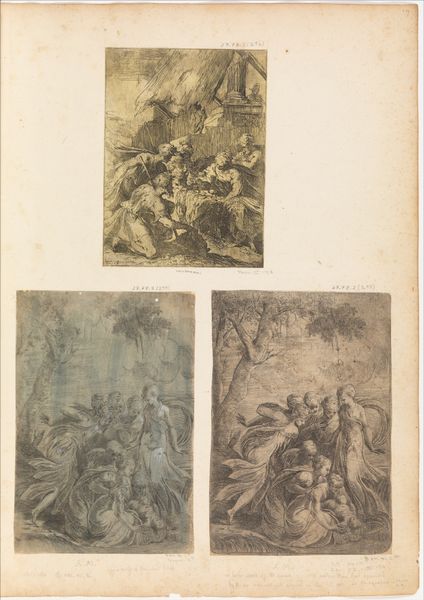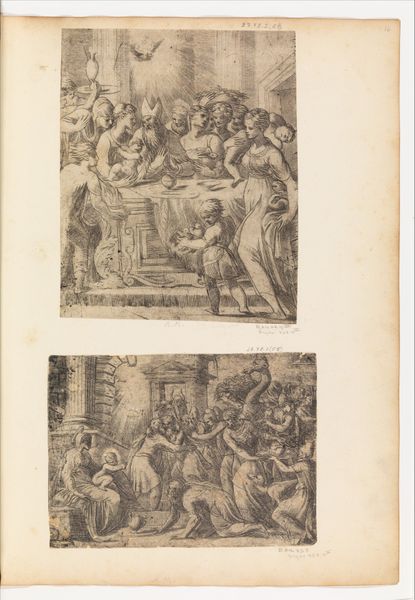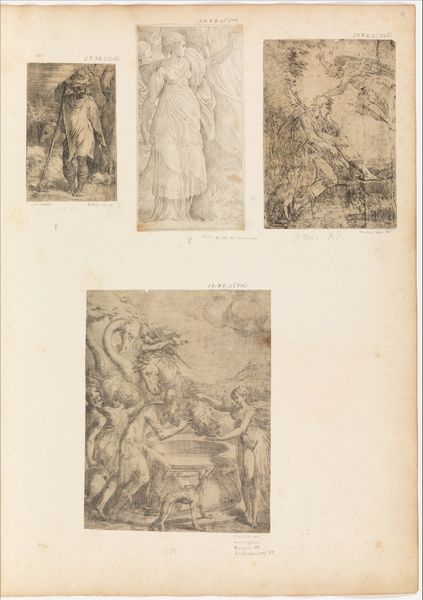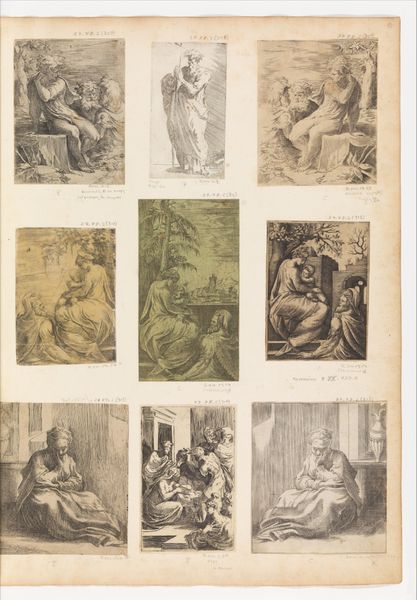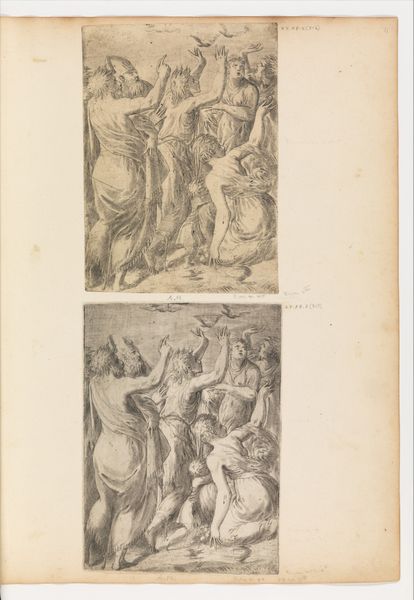
drawing, print, engraving
#
drawing
# print
#
mannerism
#
history-painting
#
engraving
Dimensions: Sheet: 6 15/16 × 4 15/16 in. (17.7 × 12.5 cm)
Copyright: Public Domain
Curator: Look at this intriguing page of engravings, including “Augustus and the Sibyl” from around 1555 to 1567, attributed to Angiolo Falconetto. What strikes you about it? Editor: My immediate reaction is one of dynamism juxtaposed with austerity. The scenes are bustling, yet the engraving style renders everything in these rather stark, almost severe lines. It feels… calculated. Curator: Exactly! This print, existing as multiples, opens up questions about accessibility and dissemination of classical themes in the mid-16th century. Consider Falconetto's labor in producing this work – the skilled hand needed to manipulate the engraving tools, the repetition involved. This print format allows a broader audience to engage with what was otherwise viewed as exclusive or elite subject matter. Editor: Absolutely. The narrative of Augustus encountering the Sibyl is laden with political undertones too. It taps into the appropriation of classical antiquity to legitimize imperial power during the Renaissance. What does it say about the relationship between religious prophecy, imperial rule, and societal belief structures? Augustus, often seen as divinely chosen, here engages with prophetic wisdom – yet this is filtered and controlled through imperial spectacle. It’s no accident this iconography resurfaces amidst rising European monarchies asserting their own 'divine' right. Curator: And let’s not overlook the materials themselves. Copperplate engraving offered a specific aesthetic, a crispness of line, a repeatability unmatched by earlier printing methods. This precision elevates engraving beyond mere reproduction. It's an artistic pursuit showcasing both the designer's skill and the printer's craftsmanship. This print is on paper, one of the most used material; the circulation of imagery via this easily transported format must have impacted its consumption and reuse. Editor: It's like a complex visual echo chamber of power. The classical stories become tools to manipulate how people perceive and accept authority, reproduced ad infinitum by processes reliant on exploiting resources, like mass deforestation driving the demand for paper. Curator: Well said. Each line in the print has layers, echoing not just a classical scene but complex power dynamics involved in production. Editor: It pushes you to consider not only art's formal beauty but its relationship to broader power structures, whether past or present.
Comments
No comments
Be the first to comment and join the conversation on the ultimate creative platform.
